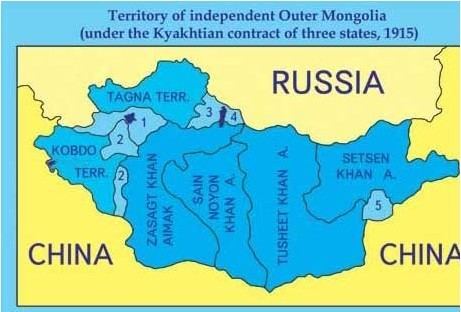 | ||
Signed on 25 May 1915, the Treaty of Kyakhta was a tri-party treaty between Russia, Mongolia, and China.
Russia and China recognized Outer Mongolia's autonomy (as part of Chinese territory); Mongolia recognized China's suzerainty; China did not want Mongolia to conclude international treaties with foreign countries respecting political and territorial questions.
The Mongolian representative, Prime Minister Tögs-Ochiryn Namnansüren, was determined to stretch autonomy into de facto independence, and to deny the Chinese anything more than vague, ineffectual suzerain powers. The Chinese sought to minimize, if not to end, Mongolian autonomy. Mongolians viewed the treaty as a disaster because it denied the recognition of a truly independent, all-Mongolian state. Nevertheless, Outer Mongolia remained effectively outside Chinese control and, according to explanation by baron B.E. Nolde, the Director of Law Section of the Russian Foreign Ministry, had all necessary attributes of the state in the international law of that time.
The treaty severely curtailed the independent status of Mongolia declared in 1911, but eventually became moot after the October Revolution of 1917, and the declaration of the Mongolian People's Republic in 1921.
